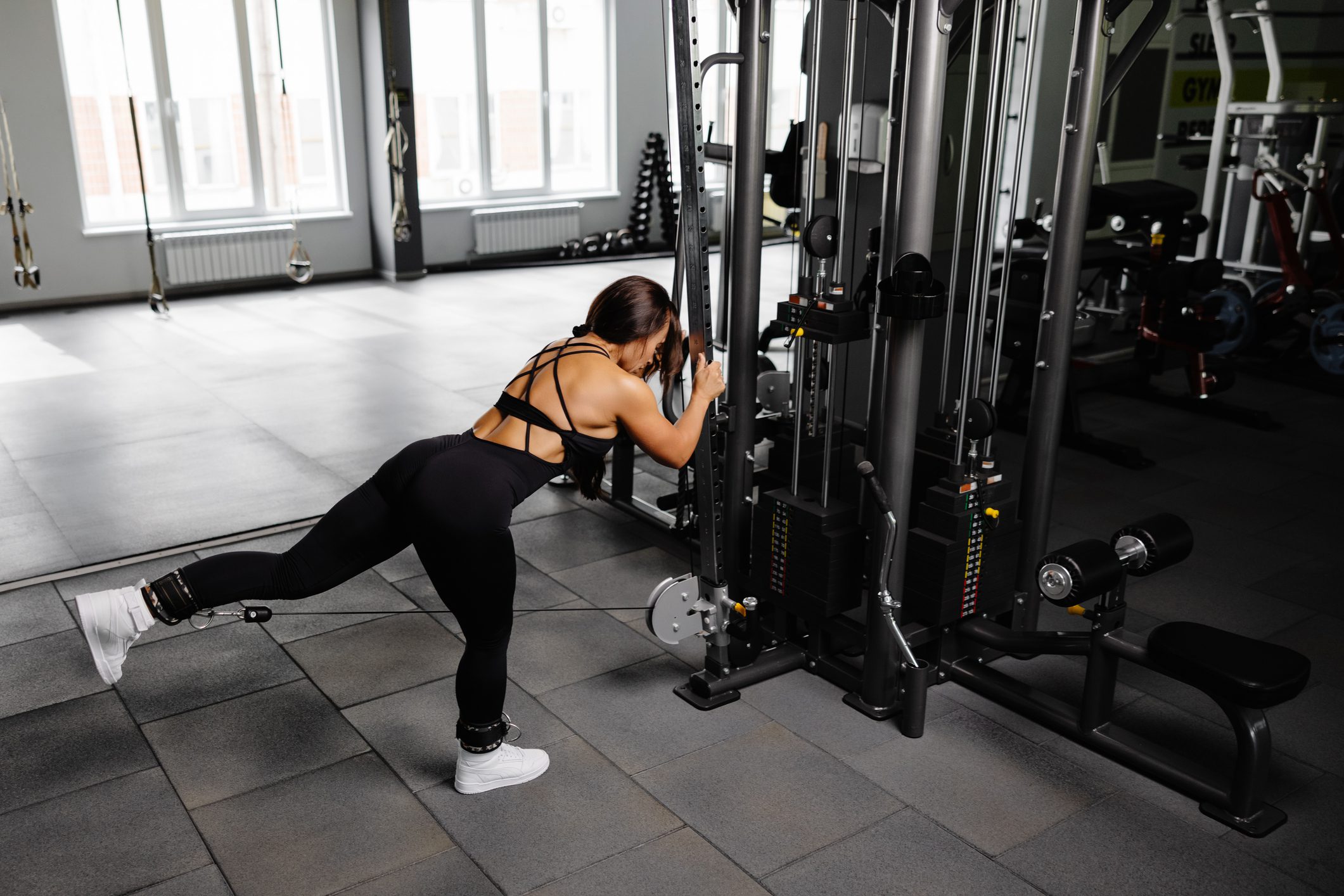 I'm blown away by your fabulous, thoughtful questions. Wow, did I get a ton of them. So many, in fact, that I'm dedicating the next few weeks' blogs to addressing those questions.
I'm blown away by your fabulous, thoughtful questions. Wow, did I get a ton of them. So many, in fact, that I'm dedicating the next few weeks' blogs to addressing those questions.
This week, I've kept the questions Sugar Impact-related. In the next few weeks, I'll address shakes, bars, and more broad-based questions you've submitted. I will continue to update this page as new Sugar Impact questions come in, so keep those questions coming in the comments section.
If I didn't answer yours, hang tight: I will in the next few weeks. Thanks for reading and thank you for making The Sugar Impact Diet a bestseller!
The Virgin Diet vs. Sugar Impact Diet
Should I start with The Virgin Diet (TVD) or The Sugar Impact Diet (SID)?
I wrote this blog describing the differences between the two plans and where you should start.
Sugar
You mention there are more than 50 names for sugar. What are they?
My friend Jonathan Bailor lists 57 names in this blog.
Is all sugar equal? Coconut sugar, honey. Do we get rid of it all?
I talk about all these sugars in The Sugar Impact Diet. I also have blogs addressing many of them, including honey, agave, coconut sugar, and healthy alternative sweeteners.
General Questions about Sugar Impact Diet
What does “sugar burner” mean?
Just what it sounds like: your body is using sugar as fuel rather than fat. One of the hallmarks of being a sugar burner is that while you’re burning sugar and storing fat, you experience frequent drops in blood sugar that make your body scream for more sugar. You’ll get crazy hungry if you go for a few hours without food or you skip a meal. And when this happens, watch out! You’re irritable, foggy, totally preoccupied, and showing the fangs of cravings.
Becoming a fat burner is exactly how it sounds— you burn fat! So you drop weight fast. And you stay in power weight loss mode because once your sugar impact (SI) is under control, your hormones will work with you to lose weight and stay lean. You’ll also have more energy, because when you fuel your body with low SI foods and burn your stored fat for energy, you avoid those awful energy slumps that come with a high SI diet (you know those sugar crashes all too well!). And here’s a bonus— you’ll even burn more fat as you sleep!
What are the Sugar Impact Scales?
The Sugar Impact Scale takes into account a food’s fructose (in grams), nutrient density, and fiber, as well as its glycemic load, a measurement of how the food affects your blood sugar levels. Fiber and nutrients are positives that can downshift the effects of high fructose and glycemic load. And, of course, dose matters— the glycemic load is also based on average serving size. This scale is a simple and easy way of categorizing foods according to their overall impact on your blood sugar— high, medium, or low. Think of low-SI foods as “green.” You’re good to go on these foods; eat them regularly. Consider the medium-SI foods yellow, so proceed with caution and incorporate only the amount you can have and still feel great. (I’ll walk you through the best way to taper medium-SI foods out of your diet in Cycle 1, and then I’ll explain how to figure out the right amount for you to eat long term in Cycle 3.) When it comes to high-SI foods, you guessed it— stop! Think of them as red. Eat and drink them as a rare treat, and even when you do, you’re likely to feel it. And not in a good way.
You mention SID isn’t a no-sugar diet. I thought sugar was bad?
The Sugar Impact Diet isn’t about eliminating sugar altogether; it’s about eating the right sugar. The program I’ve created and outlined in this book is unlike any other. It lays out a step-by-step process to wean you off the foods with the highest and most damaging sugars— those with the highest Sugar Impact— so that you can lose weight, drop fat, and improve your health without feeling deprived. Learning how to swap good sugars for bad sugars for just 2 weeks will heal your body and transform your life forever. By the end of the program, you’ll not only have lost weight and reclaimed your life, you’ll be armed with information and lots of great alternatives to satisfy your sweet cravings.
Do you have suggestions about how I can do SID on a budget?
I wrote this blog about eating healthy on the tightest budget. And here's five strategies for fast, lasting fat loss that don't cost a penny!
We're suppose to have 2+ low sugar impact vegetable servings at each meal up to 10 servings a day. I always thought squash such as acorn, butternut, etc were considered a starchy vegetable and therefore fit into a carb category. I see that they are listed in the low sugar impact column of the scale. How can eating 3 cups of salad greens be equivalent to eating 3 cups of butternut squash at a meal?
Remember here I am looking at a food's sugar impact, based on its fructose, fiber, nutrient density, and glycemic load. Based on those criteria, the squashes you mention would qualify as low-sugar impact.
Cravings/ Falling Off the Plan
Help. I'm in Cycle 1 of SID and I have fierce cravings. How can I reduce them?
This blog provides 15 ways to beat cravings. I specifically wrote it for the holidays, but cravings happen year-round!
If I fail and eat sugar in the afternoon, do I just eat dinner as if nothing happened or skip dinner to reduce the calories since I cheated?
I want you to get right back on plan, but you will also want to take a close look at your food journal (you're keeping one, right?) and determine what went wrong. Did you not eat enough at your last meal? Did you not completely adhere to the Plate rules? Did something slip in that derailed your progress? Asking those tough questions will help you pinpoint where things got off track, but also ensure that things get and stay on track.
Approved Foods
How can I determine whether a packaged food is SID approved?
For processed foods, my rule is that food should have no more than 5 grams of added sugar per 100- calorie serving (and the less the better, of course). And, of course, it goes without saying (but I figured I might as well) that I mean the healthier, least- processed choices here.
Cycle 1
How do I know if I need one or two weeks in Cycle One?
Depending on where you start on the Sugar Impact Quiz, you’ll spend 1 or 2 weeks in Cycle 1. This time is necessary to lay the groundwork for Cycle 2. As you swap high-SI foods for medium-SI foods, you’ll begin your shift from sugar burner to fat burner— and seeing the change in your energy levels and on the scale will be the motivation you need to stay on the plan until you’re ready to move to Cycle 2.
Can you explain Cycle 1 in a nutshell?
In Cycle 1, you’ll use the Sugar Impact Scales to swap high SIs for medium SIs in each of the seven food categories: grains, roots, packaged fruit, low/no-fat dairy and diet foods, drinks, dressings and sweeteners, and added sugar. You’ll be slowly tapering from a high-SI diet to a medium-SI diet. The key here is to transition over time, so you don’t experience sugar withdrawal in Cycle 2.
Cycle 2
The first time that we're in Cycle 2, do we give up all the fruit listed in the Low SI category except the one's that have an asterisk or are they all acceptable?
For Cycle 2, you will only want to use the asterisked fruits on the list. Don't worry, this is just for 2 weeks!
Why can’t I go directly to Cycle 2?
If you haven’t gone through Cycle 1, do not try to cut in line here. You won’t be gaining anything— certainly not the week you hoped to skip. You’ll just set yourself up to wipe out, and you’ll eventually give over to the idea that you have to start at the beginning. Go back and do it— it’s just a week!
Can I spend more than 2 weeks in Cycle 2?
The key in Cycle 2 is to really tune in to how your body is responding and to pay attention to your own needs. If you find that you need more than 2 weeks to get through this cycle, that’s completely fi ne. Everyone is different, and you’d rob yourself of a life-changing gift if you try to measure your progress against someone else’s. So this is not about being arbitrarily locked into numbers on a chart— it’s about you losing weight and feeling good fast.
Do I need to count in Cycle 2?
There’s no need to count as long as you follow the rules and stick with low-sugar impact foods. I get it though: some people like or need to count. For those people, during Cycle 2 you’ll drop your total sugar consumption to 25 grams or less. Fructose, though, will drop to under 10 grams. Your total carbs will fall somewhere in the 100– 150 gram range (up to 200 grams for larger men and athletes).
Why no fruit in the shakes for Cycle 2?
One thing you’ll notice right away is that the shake recipes in this cycle don’t have any fruit. The only fruit allowed in shakes in Cycle 2 are lemons and limes, and fruit we sometimes think of as veggies, like avocados, tomatoes and olives. The rule for the sweet ingredients in protein powder still applies, but for these 2 weeks, since you’re transitioning to a very low sugar diet, the fruit has been modified to lower fructose. Don’t worry – I’ve created some yummy shake recipes in Cycle 2. You won’t miss the fruit!
After I’ve done the intensify week in Cycle 2, how should I proceed?
Once you’ve come through the Intensify week, proceed to Cycle 3 and do the assessments as instructed to make sure you’re ready. In Cycle 3, you’ll test whether your long- term, low-SI life can include a sweet treat now and then. If it can, great; if it can’t, you can always return to Cycle 2 and stay here for life.
Can I stay in Cycle 2 forever?
I want you to undertake Cycle 3 to figure out whether you’re in a place to have an occasional piece of cake without sliding backwards, or if you have to spend a bit more time in Cycle 2, possibly even a month, before you get there. That said, you can stay in Cycle 2 forever if you want or need to; stick with all low Sugar Impact (SI) foods (go ahead and add 1– 2 servings of fruit as well), and an occasional medium-SI choice (1– 2 servings a day max) is okay, too.
Cycle 3
How do I know when I’m ready to start Cycle 3?
Move into Cycle 3 when your Sugar Impact quiz scores are 2 or less per symptom, 12 or less total, or your overall score is reduced by 50% from your starting score. There are 2 possible paths when you arrive in Cycle 3. One is that you’re ready for Cycle 3— you’ve passed, get to move on, and can incorporate some medium- and high-SI foods in your life. The other is that you’ll simply stay in Cycle 2 a little longer until you’re ready for Cycle 3.
I know you don’t count specifically, but what general numbers should I commit to in Cycle 3?
In Cycle 3, aim for 25 grams fructose overall, 50 grams of sugar overall, and 150– 200 grams carbohydrates overall.
Other Brands, Other Plans
What do you think about [specific plan or expert]?
I wrote this Huffington Post blog about committing wholeheartedly to a plan for ultimate success. In short, please don't mix and match plans, which becomes a recipe for disaster. We like and respect many experts, and there are some fabulous books out there for fast, lasting fat loss. No two experts will 100% agree. You've committed to the Sugar Impact Diet, so stick with the plan and don't try to incorporate non-SID principles.
Can you recommend other protein powder brands?
Unfortunately, we can't possibly evaluate every brand and the many variations within those brands. We have, however, created an easy-to-follow guide to determine whether a protein powder is Sugar Impact-friendly. Here are some guidelines:
- Protein sources. I recommend a blend of vegan proteins: preferred sources are pea, chia, cranberry, chlorella, or rice. The new kid on the block is beef protein (look for de-fatted with no antibiotics or hormones added). Avoid soy, egg, or milk protein powders.
- Go natural. Look for GMO- free and hormone- free (no recombinant bovine growth hormone, or rGBH).
- Go low SI. Look for 4– 5 grams of sugar per serving, max. Stick with a very small amount of natural sweetener or sugar alcohol (i.e., stevia, xylitol, erythritol, rice syrup, evaporated cane juice syrup, dextrose). Avoid artificial colors or sweeteners and high-SI sweeteners such as fructose, agave, aspartame, and sucralose.
You encourage breakfast, yet I’ve heard other experts say skipping breakfast is okay and even beneficial.
Remember what I said above: don't mix and match plans. Breakfast sets your metabolic tone for the day. A lot of mindless mistakes are made fi rst thing in the morning, and sugar comes rushing in through cereals and muffins (with juice!). Once you’ve set your blood sugar in pinball motion, it’s a roller coaster you never get off. A big, protein- rich, high- fiber, low-SI breakfast is the best way to prepare you to take on the world. My go-to breakfast at home and on the road is my Sugar Impact Shake. It serves up everything that’s good— it’s packed full of flaver and nutrients, it’s filling, and it tastes great!
I've heard you criticize juicing and green drinks in interviews. What specifically is wrong with them?
Well, one popular green juice contains 56 grams of sugar in a 15.2 ounce bottle! In this blog I discuss why most juices are nothing more than sugar water, and how to correctly do a green drink.
Dining Out
Any tips about how to dine out smartly on SID?
I've provided my top 9 tips to do SID anywhere in this blog.
Meal Timing
Help. I am following your Plate quota but I’m finding it hard to go 4 – 6 hours between meals.
When you eat with the balance the Plate gives, you should be able to go 4– 6 hours before you need to eat again. If you can’t, stop and remember that food is information. Go back to your journal and review your choices. Did you get enough clean, lean protein and healthy fats? Did you choose the right slow, low carbs from the medium- and low-SI columns only? Or did you cheat and now are paying the price?
© 2014 JJ Virgin & Associates, Inc. Celebrity Nutrition & Fitness Expert JJ Virgin helps clients lose weight fast by breaking free from food intolerances and crush their sugar cravings. She is author of New York Times Bestsellers The Virgin Diet: Drop 7 Foods, Lose 7 Pounds, Just 7 Days, The Virgin Diet Cookbook: 150 Easy and Delicious Recipes to Lose Weight and Feel Better Fast and coming November 4, 2014: The Sugar Impact Diet: Drop 7 Hidden Sugars, Lose up to 10 Pounds, Just 2 Weeks. JJ is also a frequent blogger at Huffington Post, Mind Body Green, and other outlets as well as a popular guest on TV, radio, and in magazines. Learn more at www.jjvirgin.com.




